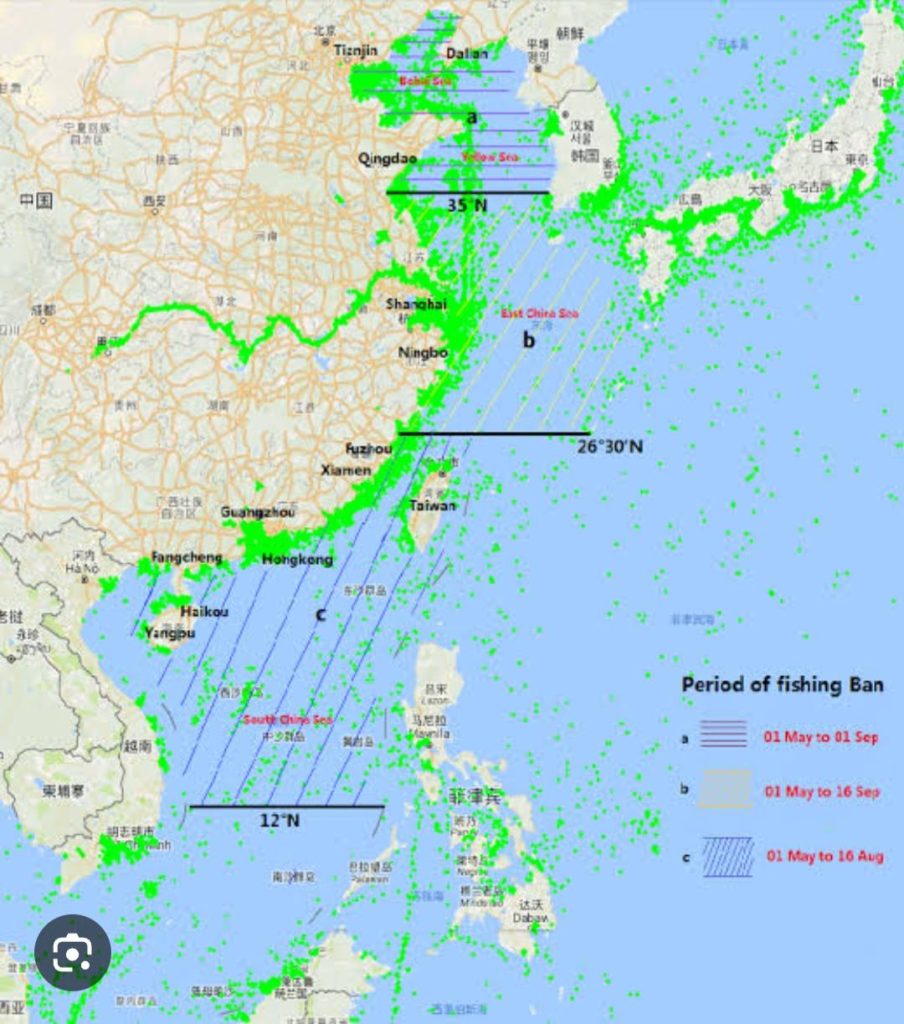CSS Current Affairs | US-China Clash in the South China Sea
The following question of CSS Current Affairs is solved by Hamail Syed under the supervision of Howfiv’s Pakistan Affairs and Current Affairs Coaches. She learnt how to attempt 20 marks question and essay writing from Sir Syed Kazim Ali, Pakistan’s best CSS and PMS English essay and precis teacher with the highest success rate of his students. This solved past paper question is attempted on the pattern taught by Sir to his students, scoring the highest marks in compulsory and optional subjects for years, and uploaded to help aspirants understand how to crack a topic or question, how to write relevantly, what coherence is, and how to include and connect ideas, opinions, and suggestions to score the maximum.

Outline
1- Introduction
2- Geostrategic Significance of the South China Sea and the Interests of the United States (US) and China in It
3- The United States’ Rebalancing Policy in the South China Sea
- Evidence: In 2011, former US President Obama described the rebalancing policy as a broad shift of the US’s focus from the Middle East to Asia Pacific because of the geostrategic significance of the latter to the USA’s priorities.
4- The Salient Contours of the US’s Rebalancing Policy in the South China Sea
- ✓Enhancing Military Presence
- Evidence: According to the US Department of Defense, “The US conducted six FONOPs in 2017, five in 2018 with the participation of two US warships, and nine FONOPs in 2019.”
- ✓Forming and Strengthening Alliances
- Evidence: Former US President Obama stated, “Our adherence to defend the Philippines is ironclad, and the US will keep that commitment, as allies never stand alone.”
- ✓Building the Economic and Military Capacity of its Allies
- For instance, US President Joe Biden signed a law allocating $2 billion in foreign military financing for Taiwan and regional allies and $1.9 billion to replenish defence supplies provided to Taiwan.
5-China’s Assertive Policy in the South China Sea
- Evidence: In 2014, Chinese President Xi Jinping stated, “China firmly upholds its territorial sovereignty and maritime rights and properly handles its territorial and island disputes.”
6- The Salient Contours of China’s Assertive Policy in the South China Sea
- ✓Embarking on Extensive Land Reclamation Projects
- Evidence: According to the report by the US Department of Defence, 2016, “China has reclaimed 3,200 acres in the South China Sea.”
- ✓Imposing Fishing Bans Unilaterally
- For instance, like every year, the country has imposed a four-month-long fishing ban in 2024 in the region, which is likely to last until September.
- ✓Deploying Maritime Militia
- Evidence: According to the research article ‘China’s Assertive Foreign Policy in the South China Sea Under Xi Jinping’ by Lidya C. Sinaga, “In 2023, a Chinese coast guard ship and a maritime militia vessel collided with the Philippines’ coast guard ship and harassed and blocked a Philippine Navy ship.”
7- China’s Disputes with the Regional Countries
- ✓China-Philippines Dispute
- Evidence: According to the Asia Maritime Transparency Initiative, “In 2024, China’s coast guard fired water cannons at one of the Philippines’ supply boats, shattering its windows and injuring some of its sailors.”
- ✓China-Vietnam Dispute
- For example, in 2014, the China-Vietnam oil rig crisis happened, in which China invaded Vietnam’s claimed EEZ and deployed an oil rig within it, leading to a Beijing-Hanoi diplomatic crisis.
- ✓China-Taiwan Dispute
- Evidence: According to the Taiwan Ministry of Defence, “In 2020, Taipei City and Washington conducted the ‘Balance Temper’ exercise, which focused on maritime defence.
8-Methods Claimants in the South China Sea Should Adopt to Resolve the Disputes
- ✓To Adopt the Condominium Agreement, just like Germany-Luxembourg Adopted, Making the Moselle River a Joint Germany-Luxembourg Territory
- ✓To Establish Regional Fisheries Management, just like the Western and Central Pacific Fisheries Commission, to manage and conserve fisheries resources across the South China Sea.
9- Critical Analysis
10- Conclusion

Answer to the Question
Introduction
The South China Sea, one of the world’s most significant water bodies, has become a point of contention among China, the United States (US), and some Association of Southeast Asian Nations (ASEAN) countries. Though the South China Sea dispute has a long history, dating back centuries, it has gained momentum after the 1968 article by geologist John Fay, which suggested that the sea might hold significant oil and gas resources. Moreover, the sea is key in influencing global politics, maintaining hegemony in international trade, and accessing one of the world’s most productive fishing regions. The aforementioned factors have attracted the attention of global superpowers, such as China and the US. To make its footing strong in the disputed South China Sea, China has adopted an assertive policy regarding the sea, thus undergoing extensive land reclamation projects and imposing fishing bans unilaterally. Consequently, the assertive posture of China towards the sea has generated suspicion among the littoral states and its rival, the US. Therefore, to counter Beijing’s assertiveness in the sea, Washington has announced its rebalancing policy for the sea, which includes enhancing its military presence, forming alliances in the region, and building its allies’ economic and military capacity. Not only this, the sea’s resource richness and China’s assertiveness have sparked a scramble for territorial sovereignty and resources between China and other littoral states, namely the Philippines, Vietnam, Taiwan, etc. Consequently, to quell the complex situation, it is high time the littoral states adopted the Condominium Agreement for the fiercely contested South China Sea, just like Germany-Luxembourg adopted it, making the Moselle River a joint Germany-Luxembourg territory.
Geostrategic Significance of the South China Sea Triggering the Dispute and the Interests of the United States (US) and China in It
Before discussing the US’s rebalancing policy and China’s assertive policy regarding the South China Sea, it is imperative to first glance at the geostrategic significance of the fiercely disputed sea and the interests of the US and China. Geographically, the South China Sea connects Asia with Europe and Africa, serving as a vital artery for global trade, especially for the world’s largest economies. According to the US Department of Defence, “The trade passing through the South China Sea annually accounts for around 60% of global maritime trade and approximately 22% of total global trade.” The fact elaborates on the significance of the sea in global trade. Moreover, the US Energy Information Administration states, “The region is believed to hold approximately 11 billion barrels of oil reserves and around 190 trillion cubic feet of natural gas reserves.” The fact signifies that the sea holds plenty of energy resources, thus attracting industrialized nations, especially the US, China, and littoral states, and triggering disputes among one another. Adding more to the picture, the sea possesses numerous critical chokepoints, namely the Strait of Malacca and the Bashi Channel, allowing the controlling state to exert political influence and shape international relations. That is why the global superpowers, the US and China, have adopted their rebalancing and assertive policies, respectively, along with multiple countries claiming to have overlapping maritime boundaries, aiming to dominate the region in particular and on the globe. Thus, the highly contested South China Sea has the potential to grant economic, strategic, and geopolitical advantages to the dominant state, triggering disputes among multiple nations.
The United States Rebalancing Policy in the South China Sea
Delving into the details of the United States’ approach regarding the South China Sea, the country jumped into the South China Sea dispute in 2009 by signing the Treaty of Amity and Cooperation (TAC) with Southeast Asian countries, thus indicating its strategic pivot towards the South China Sea. Moreover, in 2010, the then-Secretary of State Hillary Clinton explicitly stated, “The US has an interest in freedom of navigation, open access to Asia’s maritime, and respect for international law in the South China Sea.” The evidence highlights US concerns regarding the region. Also, in 2011, former US President Obama announced the rebalancing strategy for Asia in his speech before the Australian Parliament. He aptly described the policy as a broad shift of the US’s focus from the Middle East to Asia Pacific because of the geostrategic significance of the latter to the USA’s priorities. The evidence highlights that the US’s rebalancing policy for the region is a comprehensive approach that aims to secure American interests in the resource-rich region and global trade route. The US rebalancing strategy in the Asia Pacific consists of three main elements: diplomatic, economic, and military security. More specifically, the South China Sea has become a significant flashpoint in the Asia-Pacific region, where the USA and China vie for hegemony and influence. Therefore, the US’s rebalancing policy in the South China Sea is all about challenging China’s growing military presence and territorial claims in the South China Sea.
The Salient Contours of the US’s Rebalancing Policy in the South China Sea
The following section will discuss the salient contours of the US rebalancing approach in the South China Sea.

Source: The Centre for Strategic and International Studies (CSIS)
- Enhancing Military Presence
To begin with, the US’s rebalancing policy in the South China Sea encompasses a large-scale military presence in the region. It includes the promotion of Freedom of Navigation Operations (FONOPs), overflights, patrols, and joint drills in disputed waters. According to the US Department of Defense, “The US conducted six FONOPs in 2017, five in 2018 with the participation of two US warships, and the highest number of FONOPs in 2019 with nine operations.” The fact sheds light on the increased naval deployment of the US in the South China Sea, thus challenging the excessive maritime claims of China and ensuring free access to international waters under the UN Convention on the Law of the Sea (UNCLOS). Hence, the US continues to enhance its military standing in the South China Sea in the name of its rebalancing policy for the region.
- Forming and Strengthening Alliances
Next, the US’s rebalancing approach for the South China Sea includes forming and strengthening alliances with countries playing a vital role in the region. It aims to foster cooperation on economic, security, and political issues, predominantly to balance China’s assertive behaviour in the region. For example, during his visit to the Philippines 2014, former US President Obama said, “Our adherence to defend the Philippines is ironclad, and the US will keep that commitment, as allies never stand alone.” Also, the formation of the alliance between the Australia-United Kingdom-United States (AUKUS) illustrates the US’s rebalancing policy for the region. These evidences underscore the diplomatic efforts of the US to curtail the growing influence of China in the region. Thus, forming and strengthening alliances is one of the salient contours of the US rebalancing approach to the South China Sea.
- Building the Economic and Military Capacity of its Allies
Lastly, theUS’s rebalancing strategy regarding the South China Sea also revolves around the capacity-building of its allies in terms of military and economic capabilities to deter China’s territorial claims in a befitting manner. It continues to assist regional countries, especially the claimants of the disputed territories of the region, in building their maritime security capabilities. For instance, US President Joe Biden signed a law providing $95 billion to countries, including Taiwan, thus allocating $2 billion in foreign military financing for Taiwan and regional allies and $1.9 billion to replenish defence supplies provided to Taiwan. The illustration depicts the US’s military spending to secure its self-interest and challenge the hegemony of China in the region. Therefore, capacity building among the regional allies is one of the prime features of the US rebalancing policy for the South China Sea.
China’s Assertive Policy in the South China Sea
Moving towards China, the country declares most of the islands in the South China Sea because of its historical claims that it was the first country to discover, name, and use those islands for over two centuries. Moreover, in 1953, the government declared its “nine-dash line” without facing any opposition or diplomatic protest from the international community, making it approved and recognized internationally, per China’s viewpoint. However, in 1970, multiple countries started to claim islands and numerous zones of the region, such as the resource-rich Spratly Islands. Additionally, in 2009, the US jumped into the South China Sea dispute and indicated its strategic pivot towards the region. Contrary to this, in 2012, China officially published the map delineating its claims in the region for the first time, showing an assertive policy regarding the South China Sea. Also, it continues to be more assertive under President Xi Jinping. In 2014, he aptly stated, “China does not allow its core interests to be undermined. It firmly upholds its territorial sovereignty and maritime rights and properly handles territorial and island disputes.” The evidence depicts the country’s assertive policy, as one of its highest priorities is safeguarding its sovereignty and defending its territorial integrity. Thus, China’s assertive policy regarding the South China Sea is all about defending and advancing its maritime claims and interests.

Source: United Nations Convention on the Law of the Sea (UNCLOS)
The Salient Contours of China’s Assertive Policy in the South China Sea
The following section will discuss the salient contours of China’s assertive policy regarding the South China Sea.
- Embarking on Extensive Land Reclamation Projects
First, since 2013, China has embarked on extensive land reclamation projects on its occupied reefs, which have been disputed among several South China Sea countries. It aims to strengthen its territorial claims in the region demarcated by its nine-dash line. For this, it continues to create artificial islands by dredging sand onto reefs and then concreting them to make permanent structures. According to the US Department of Defence report, 2016, “China has reclaimed 3,200 acres in the South China Sea.” Additionally, it also states, “China has fully militarized some of its artificial islands with fighter jets, anti-aircraft missile systems, laser and jamming equipment, etc.” These facts show that Beijing seeks to strengthen its maritime territorial claims through extensive land reclamation projects. Hence, the reclamation activity of China is one of the salient features of its assertive policy for the South China Sea.

Source: Centre for Strategic and International Studies (CSIS)
- Imposing Fishing Bans Unilaterally
Second, China’s imposition of fishing bans in the South China Sea is also one of the salient contours of its assertive regional policy. The sea is rich in marine life, one of the most productive fishing regions globally. However, China claims that the South China Sea fisheries are in serious jeopardy; countries have started to exploit the resource. Therefore, to safeguard the treasure from running dry, in 1999, China unilaterally introduced a fishing ban in the South China Sea. Like every year, the country has imposed a four-month-long fishing ban in 2024 in the region, which is likely to last until September. Nonetheless, other claimants of the disputed South China Sea, such as the Philippines, Vietnam, etc., consider this unilateral move by China one of the manifestations of its assertive and hegemonic policy regarding the region. Consequently, the salient contours of China’s assertive policy in the South China Sea also encompass its imposition of unilateral fishing bans in the region.

Source: Centre for Strategic and International Studies (CSIS) Report, 2023.
- Deploying Maritime Militia
Third, thedeployment of maritime militia is another salient contour of China’s assertive policy in the South China Sea. The Chinese maritime militia (CMM) is developed as a subset of China’s national militia, receiving training from the People’s Liberation Army’s (PLA) Navy and participating in drills with the Chinese Coast Guard and Navy. In addition, the Chinese defence white paper, 2023, maintains that the maritime militia is a backup force for the PLA. Moreover, it is the Chinese tactic of “salami slicing,” the CMM serves as the first slice, the China Coast Guard as the second, and the People’s Liberation Army (PLA) Navy as the final slice. According to the research article ‘China’s Assertive Foreign Policy in the South China Sea Under Xi Jinping’ by Lidya C. Sinaga, “In 2023, a Chinese coast guard ship and a maritime militia vessel collided with the Philippines’ coast guard ship and harassed and blocked a Philippine Navy ship delivering supplies to Filipino troops on the Second Thomas Shoal of the Spratly Islands.” The evidence depicts that China has employed them as an advance guard to safeguard the nine-dash line claim in the region to avoid accusations of using force. Hence, the deployment of maritime militia is one of the prime contours of China’s assertive policy in the South China Sea.
China’s Disputes with the Regional Countries
Now moving towards the dispute between China and regional countries, its roots emerge from China’s “Nine-Dash Line” claim, also known as the “U-shaped Line.” The claim represents a demarcation line encompassing around 90 per cent of the South China Sea, including the internationally recognized Exclusive Economic Zones (EEZs) of the Philippines, Vietnam, Brunei, Malaysia and Taiwan. According to the Permanent Court of Arbitration ruling in the Hague in 2016, “China’s nine-dash line claim has no legal basis under the United Nations Convention on the Law of the Sea (UNCLOS).” The evidence suggests that all the measures China took in the South China Sea are assertive. Still, China supports its claims with historical evidence that dates back to the 2nd century and the Western Han Dynasty. Thus, the nine-dash line claim has triggered a dispute in the sea among the littoral states because international laws do not support it. The following section will describe China’s dispute with regional countries, namely the Philippines, Vietnam, and Taiwan, in detail.

Source: United Nations Convention on the Law of the Sea (UNCLOS)
- China-Philippines Dispute
The dispute between China and one of the claimants of the disputed South China Sea, the Philippines, is a longstanding territorial conflict. Both countries claim sovereignty over the multiple islands, including the oil- and gas-rich Spratly Islands, upon which China is building and militarizing artificial islands. Not only this, Scarborough Shoal is also one of the points of contention between the two states. Though the Philippines claims that the Scarborough Shoal lies within its Exclusive Economic Zone (EEZ) as per the UNCLOS, China still controlled it in 2012 through the Coast Guard’s constant presence. In light of the current landscape, Beijing and Manila’s sea dispute has been heated up during the rule of Philippine President Ferdinand Marcos Jr., who has taken a stronger stance against China than his predecessor, Rodrigo Duterte. According to the Asia Maritime Transparency Initiative, “In 2023, China reinstalled a 1,247-foot floating barrier that covers the entire entrance of the Scarborough Shoal, restricting access to the area.” Additionally, it also states, “In 2024, China’s coast guard fired water cannons at one of the Philippines’ supply boats that were heading towards the disputed Second Thomas Shoal, consequently shattering its windows and injuring some of its sailors.” These evidences highlight the intensified political situation of the two countries in recent dynamics. The Philippines has bolstered its ties with its Indo-Pacific neighbours to counter it. Furthermore, its president has signed deals to increase base access, weapons transfers, and joint exercise training with the US. Likewise, US Secretary of Defence Lloyd Austin reaffirmed in 2024 that the US-Philippines Mutual Defence Treaty (1951) commits both countries to defend each other in any incident of foreign attack, including in the South China Sea. Thus, the regional dispute between China and the Philippines has heated up because of their overlapping territorial claims in the South China Sea.
- China-Vietnam Dispute
Moving ahead, along with many other claimants, Vietnam is on the front lines of a maritime territorial dispute with China. Delving into the details, both countries have multiple overlapping claims over the South China Sea. To begin with, in 1974, China took over the Paracel Islands from Vietnam. Moreover, both countries also claim sovereignty over the oil- and gas-rich Spratly Islands. Additionally, China’s nine-dash line claim overlaps with Vietnam’s EEZ, which the UNCLOS defines as In 2014, the China-Vietnam oil rig crisis happened, in which China invaded Vietnam’s claimed EEZ. They deployed an oil rig within it, leading to a Beijing-Hanoi diplomatic crisis. In the current political dynamics, the Asia Maritime Transparency Agency Report, 2024, states, “Vietnam has accelerated its building of artificial islands with a total of 301 hectares of land, thus expanding some of its outposts controlled by it in the Spratly chain.” The fact elaborates that Hanoi has ramped up its efforts to bolster its position in response to China’s assertiveness in the disputed sea. Undoubtedly, it began after Vietnam upgraded its ties with the US to the highest level in 2023. Meanwhile, Japan also aims to improve the maritime security capacity of the Philippines and Vietnam by selling military equipment to them. Hence, the China-Vietnam dispute over territorial claims has risen in the South China Sea.
- China-Taiwan Dispute
Lastly, the dispute between China and Taiwan is an intricate and long-standing issue, possessing numerous points of contention. Both countries have overlapping claims in the South China Sea, including the Spratly, Paracel, Pratas, and Taiping Islands. Moreover, the Chinese nine-dash line claim encompasses the EEZ of Taiwan as well, exacerbating the relationship between the two. Therefore, Taipei City has strengthened its military cooperation with Washington to counter Bejing’s regional dominance. According to the US Department of State, “In 2020, the US sold three weapon systems to Taiwan, namely artillery, sensors, and missiles worth US $1.8 billion.” Similarly, the two states have conducted joint military exercises in the disputed sea. According to the Taiwan Ministry of Defence, “In 2020, Taipei City and Washington conducted the ‘Balance Temper’ exercise, which focused on maritime defence. The aforementioned evidence explicitly depicts the excessive militarization of the hotly contested South China Sea. Therefore, the overlapping maritime claims of China and Taiwan have sparked disputes.
Methods Claimants in the South China Sea Should Adopt to Resolve the Disputes
Although economic and hegemonic tussles lie at the heart of the South China Sea dispute, these are not issues without solutions. Diplomatic constraints among states provide a reason to ponder what went wrong in the past. Here, some practicable measures are suggested, which may prove helpful in ameliorating the sea’s complex situation.
- To Adopt the Condominium Agreement, just like Germany-Luxembourg Adopted, Making the Moselle River a Joint Germany-Luxembourg Territory
First, all the highly contested South China Sea claimants must arrange a conference and adopt the condominium agreement with one another. In international law, a condominium is a political territory in which multiple sovereign states formally agree to share dominion equally and exercise their rights jointly without dividing the territory into “national zones.” For instance, the condominium agreement between Germany and Luxembourg was established in 1816, making the Moselle River a joint Germany-Luxembourg territory. The evidence elaborates on the practical way of resolving the conflict regarding the disputed territory. However, cooperation among the claimants is reasonably necessary to apply this concept to the disputed territory; without it, ruling the condominium territory becomes untenable. Thus, claimants of the contested South China Sea must adopt the condominium agreement and make the region a condominium to end the regional disputes.
- To Establish Regional Fisheries Management, like the Western and Central Pacific Fisheries Commission, to manage and conserve fisheries resources across the South China Sea.
Second, establishing regional fisheries management is also one of the ways forward for the South China Sea dispute. More than 55% of global marine fishing vessels operate there, escalating the fisheries dispute in the troubled waters. Therefore, to pacify the fishing dispute, claimants of the disputed sea must establish a regional fisheries management organization to regulate fishing activities, conserve depleting species, and prevent overfishing. For instance, the Western and Central Pacific Fisheries Commission (WCPFC) was established in 2004 to manage and conserve fisheries resources across the Western and Central Pacific Ocean. The illustration shows a peaceful means to end the fisheries dispute in the South China Sea. Thus, it is high time the countries established regional fisheries management for the sea to safeguard fisheries and the peace of the sea.
Critical Analysis
Critically, the ongoing South China Sea dispute between numerous countries and China could ignite a global conflict, mainly a third-world war. Notably, the involvement of the US and China, the international powers, has made the troubled waters of the sea a breeding ground for a wider conflict. Therefore, to minimize the chances of global conflict, let’s take a case study of the 1970s Norway-Russia Barents Sea dispute resolved through diplomatic means and international law. Norway and Russia had overlapping claims over the resource-rich Barents Sea, declaring a 200-mile EEZ, respectively. Surprisingly, in 2010, the sheer diplomatic efforts, international law, economic interests, and trust-building measures both resulted in the signing of the Treaty on Maritime Delimitation and Cooperation in the Barents Sea and the Arctic Ocean. Along with establishing a maritime boundary by dividing the disputed region between the states, the treaty also provided for the joint management of fish resources in the region. Thus, it can be interpreted from the case study that diplomacy, international laws, and joint management of resources can help resolve complex issues by providing a framework that can benefit all the involved parties, leading to a peaceful resolution. Thus, claimants of the fiercely disputed South China Sea must also resolve their maritime territorial issues through diplomatic means, international laws, and joint management of resources and reap the fruits of the resource-rich sea.
Conclusion
The fiercely disputed South China Sea has become a pivot point for the US, China, and regional states. Therefore, the US has adopted a rebalancing policy for the South China Sea to secure its geostrategic interests and counter China’s growing dominance. The salient contours of its policy include enhancing military presence, forming and strengthening alliances, and building its allies’ economic and military capacity. On the other hand, China has also adopted an assertive policy in the South China Sea to secure its maritime territorial claims. The salient contours of China’s assertive regional policy include extensive land reclamation projects, the imposition of unilateral fishing bans, and the deployment of maritime militia. Thus, China’s assertive policy has triggered disputes with other claimants of the sea, especially the Philippines, Vietnam, and Taiwan. These claimants have overlapping sovereignty claims with China, thus making the sea a breeding ground for disputes. In conclusion, it is high time claimants adopted a condominium agreement to share the sea equally and to exercise their rights jointly without dividing the region into national zones, thus quelling the rising tensions in the region.

CSS Solved Past Papers’ Essays
Looking for the last ten years of CSS and PMS Solved Essays and want to know how Sir Kazim’s students write and score the highest marks in the essays’ papers? Then, click on the CSS Solved Essays to start reading them.
CSS Solved Essays
CSS Solved Islamiyat Past Papers
Want to read the last ten years’ Islamiyat Solved Past Papers to learn how to attempt them and to score high? Let’s click on the link below to read them all freely. All past papers have been solved by Pakistan’s top CSS Islamiyat coach having the highest score of their students.
CSS Solved Islamiyat
CSS Solved General Science & Ability Past Papers
Want to read the last ten years’ General Science & Ability Solved Past Papers to learn how to attempt them and to score high? Let’s click on the link below to read them all freely. All past papers have been solved by Pakistan’s top CSS GSA coach having the highest score of their students.
CSS Solved General Science & Ability











